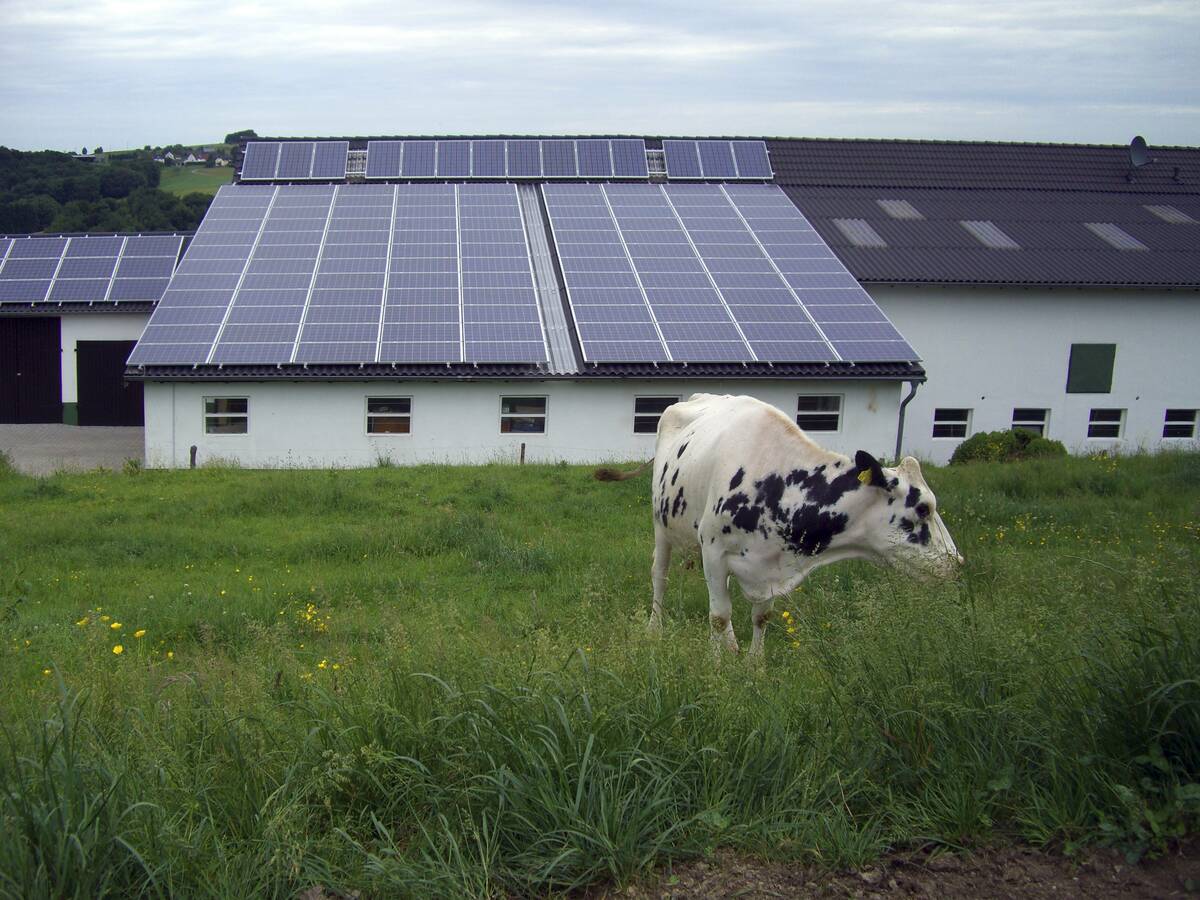Source

Source: Solar panels on a cowshed, Germany, North Rhine-Westphalia, Neunkirchen-Seelscheid. IMAGO / blickwinkel
The Renewable Energy Sources Act (EEG) originally came into force in
2000 during the Red-Green coalition government led by Chancellor Gerhard
Schröder. The act stood for a series of laws that encouraged the
generation of renewable electricity through guaranteed feed-in tariffs.
It boosted innovation and resulted in the rapid expansion of installed
renewable energy capacity, especially wind and solar energy. This photo
shows solar panels on the roof of a cowshed in North Rhine-Westphalia.
Many farmers today use barn and stable roofs as well as arable land to
create an additional source of income by generating solar energy, which
is then fed into the electricity grid.
Beginning in 2009, still
under Angela Merkel’s grand coalition government with the SPD, the
original legislation began to be modified through amendments, including
a transition from guaranteed tariffs to a market-based auction scheme.
Green politicians and other environmentalists criticized that these
amendments slowed Germany’s energy transition and undermined the
original intention of the law. Germany currently aims to become
greenhouse gas neutral by 2045 and to fulfill all its electricity needs
with supplies from renewable sources by 2035.

Source: Solar panels on a cowshed, Germany, North Rhine-Westphalia, Neunkirchen-Seelscheid. IMAGO / blickwinkel
© IMAGO / blickwinkel